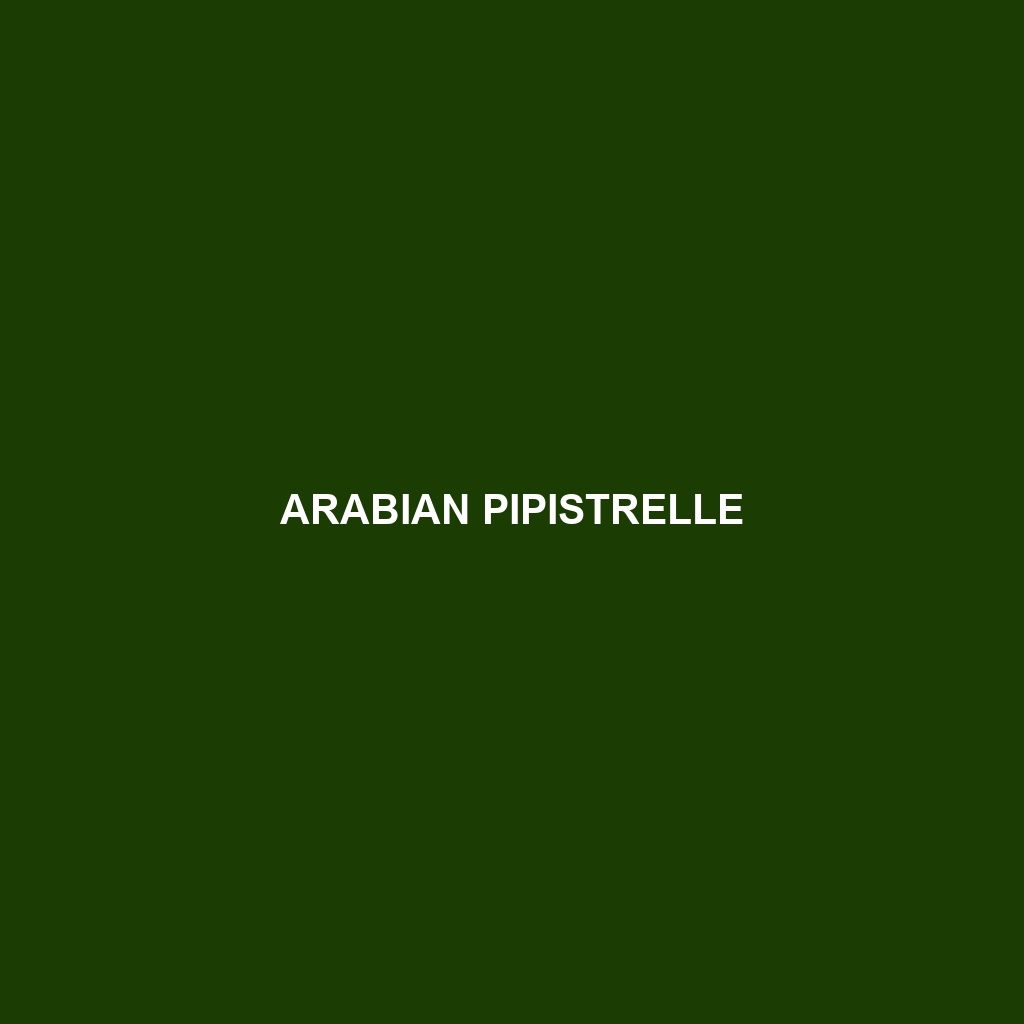Arabian Pipistrelle
Common Name: Arabian Pipistrelle
Scientific Name: Pipistrellus rueppelli
Habitat
The Arabian Pipistrelle is primarily found in the arid and semi-arid regions of the Middle East, specifically within the Arabian Peninsula. This species prefers a range of environments including deserts, scrublands, and mountainous areas, often roosting in caves, rock crevices, and human-made structures. Their adaptability to different habitats contributes to their distribution across several countries, including Saudi Arabia, Oman, and the United Arab Emirates.
Physical Characteristics
The Arabian Pipistrelle is a small bat species, measuring approximately 3 to 7 grams in weight and having a wingspan of about 24 to 28 centimeters. Its fur is typically brownish, with lighter underparts, allowing it to blend into its natural surroundings. The species is characterized by its large eyes, which are well-adapted for nocturnal activity, and its pointed ears that enhance its echolocation capabilities. Distinctive features include a short, wide skull and long wing membranes that aid in agile flight.
Behavior
Arabian Pipistrelles are nocturnal, taking to the skies at dusk to forage for food. They exhibit social behavior, often forming small colonies in roosting sites. These bats are known for their agile flight and quick maneuvers, which help them catch insects in mid-air. Their echolocation calls are typically high-frequency and allow them to navigate and hunt effectively in the dark. During the day, they remain hidden in their roosting spots, often returning to the same site regularly.
Diet
The diet of the Arabian Pipistrelle primarily consists of small insects, particularly moths, beetles, and midges. These bats employ echolocation to locate their prey, which they catch mid-flight. Their feeding habits are crucial for controlling insect populations, making them an integral part of their ecosystem.
Reproduction
Breeding for the Arabian Pipistrelle typically occurs in the spring, with females giving birth to one or two offspring after a gestation period of about 6 to 8 weeks. The young are born hairless and helpless, requiring significant maternal care. Mothers often congregate in specific roosts to nurse their young, allowing for social structures among breeding females.
Conservation Status
The Arabian Pipistrelle is currently listed as “Least Concern” according to the IUCN Red List; however, habitat destruction and climate changes pose potential threats to its population. Conservation efforts are essential to monitor their habitats and protect them from emerging dangers associated with urbanization and land use changes.
Interesting Facts
One fascinating aspect of the Arabian Pipistrelle is its adaptability to various environments, allowing it to thrive in some of the most extreme conditions of the Arabian Peninsula. Additionally, these bats can consume up to 1,200 insects in a single night, showcasing their role as natural pest controllers.
Role in Ecosystem
The Arabian Pipistrelle plays a vital role in its ecosystem as an insectivore. By preying on insects, it aids in maintaining the balance of insect populations, which is particularly important in agricultural areas where pests can damage crops. Their interactions with other species, including predators and competing species, highlight their importance within the food web of their habitat.
